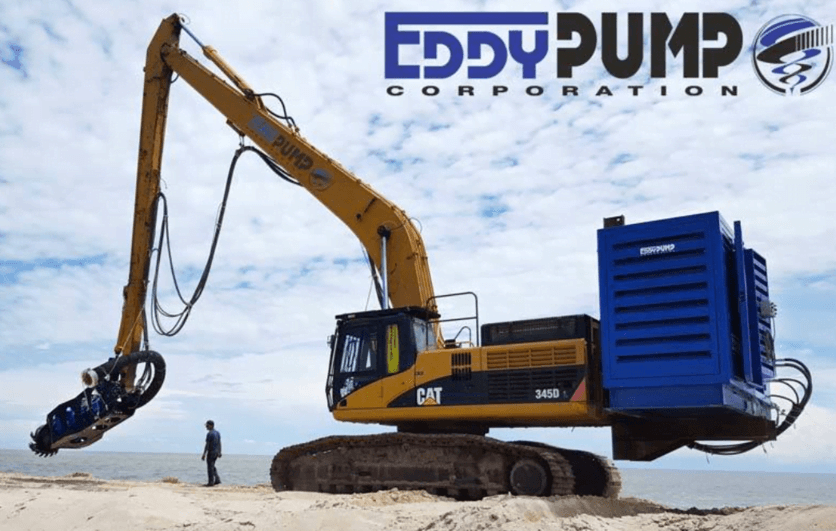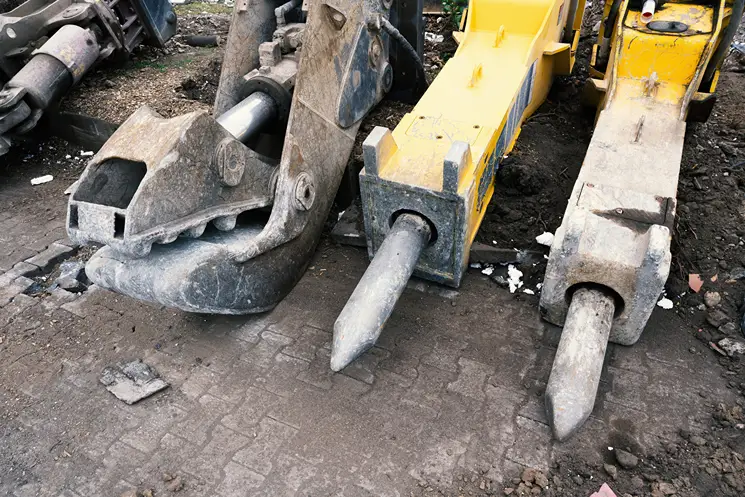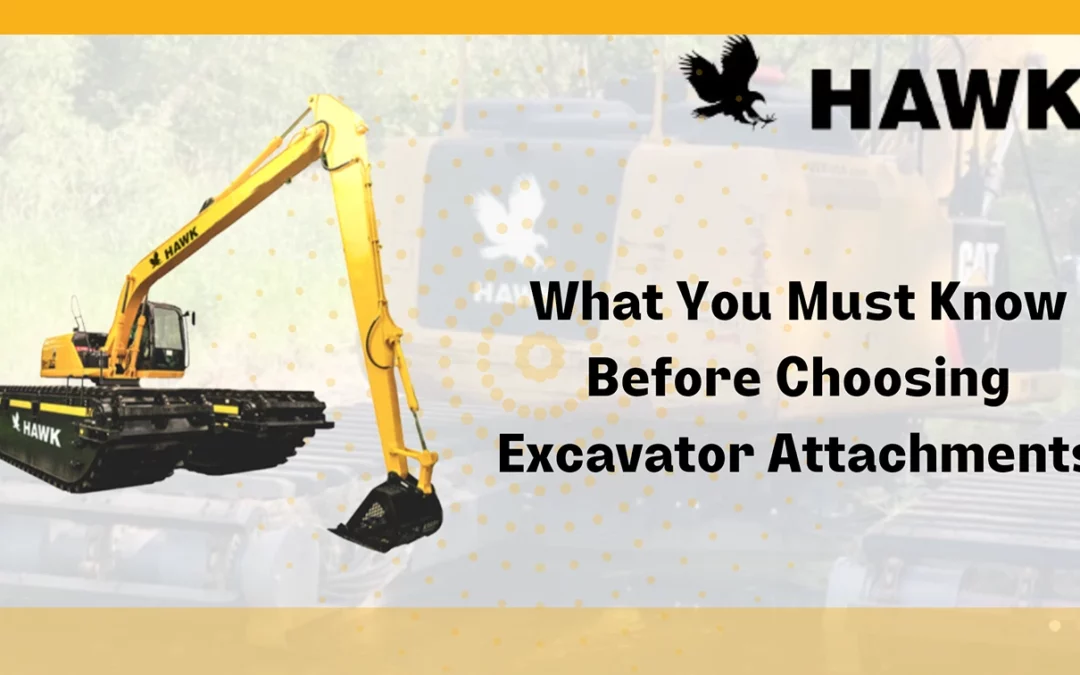Excavation and earthmoving are tough jobs that require a lot of labor and specialized equipment. They mainly involve digging and removing soil, stone, sand, debris, etc. Excavators are the most common equipment used for such activities because they are built to perform heavy-duty work.
However, without the right attachments, excavators cannot perform as desired. These are the essential tools that enhance efficiency, productivity, and safety at a work site. Check out the different types of excavator attachments by HAWK Excavator.

EDDY Pump excavator
Types of excavator attachments
Excavators are engineered to support a variety of attachments and accessories. They also enable customization for specific tasks. Here are a few attachments and their purposes.
Bucket:
Excavator buckets are commonly utilized in conjunction with excavators. Buckets are available in a diverse range of sizes and shapes. These include standard, digging, trenching, and rock buckets.
Auger:
Augers are versatile tools utilized for drilling holes in the ground. They are commonly used for planting trees, installing fence posts, and creating foundation holes. Augers are commonly affixed to the arm of an excavator.
Breaker:
Breakers are used to disintegrate tough materials such as concrete and asphalt. They are commonly employed to fracture tough materials such as concrete and asphalt. This tool is commonly used in demolition operations.
Grapple:
Grapples are used to lift and relocate materials like debris and logs. They are generally employed in forestry and land clearing works. These attachments are affixed to the arm of an excavator.
Ripper:
Rippers are used to loosen up or fragmentize soil or rock. Attachments like rippers are commonly employed in mining and quarrying operations. Rippers are affixed to the arm of the excavator.
Compaction wheel:
These are utilized for compacting soil and various other materials. This is commonly used in civil engineering and outdoor beautification initiatives. They are affixed to the arm of an excavator.
Read our blog to know more about long-reach excavator sticks and their features.

Chisels and shears as excavator attachments
How to choose the right excavator attachments
Every attachment has different use cases. So you need to consider some factors before choosing the excavator tools and equipment for your requirements. Look at the factors mentioned below:
Assess the job:
Evaluate the nature of the excavation work, such as digging, demolishing, or material handling. A bucket, hammer, grapple, or auger could be common excavation tools for your needs.
Excavator size:
Attachments are designed for different excavator sizes. Hence, take into account the size of the excavator you are working with. Refer to excavator size charts provided by manufacturers or equipment dealers.
Compatibility:
Verify that the chosen attachment is compatible with your excavator’s make and model. This ensures proper fitment and attachment mechanisms.
Operator expertise:
Consider the skill level and experience of the excavator operator. Choose attachments that the operator is familiar with. Provide necessary training if a specialized attachment is required.
It is important to buy excavator tools and equipment from a reliable supplier like HAWK Excavator. It ensures that the products they provide are of high quality, meeting industry standards and specifications. This helps to avoid issues with substandard or faulty equipment that may lead to project delays or safety hazards.

EDDY Pump Excavator Dredge Pump Attachment
Why is choosing the right attachments for excavators important?
Selecting the right equipment is important for many reasons.
- The right equipment allows for the efficient completion of specific excavation tasks.
- It maximizes equipment performance and prevents damage or inefficiencies.
- It also promotes excavator operator safety by reducing the risk of accidents.
- The right excavator equipment avoids unnecessary expenses related to equipment damage, repairs, or the need to rent or purchase additional equipment.
- It helps to optimize the budget and overall project costs.
It is also important to be safe during excavation. Here are some safety tips to keep in mind while excavating.

Long reach arm of an excavator
Why choose HAWK Excavator?
HAWK Excavator provides only high-quality excavator accessories. Our operational design makes them the most suitable for any type of reputed global excavator.
Our attachments fit perfectly with Caterpillar, Hitachi, John Deere, and Komatsu excavators. Moreover, the designs of excavator accessories ensure safety and ergonomics. It helps to manage tough jobs safely.
Final words
Excavation attachments such as buckets, augers, and breakers allow customization of excavation jobs. While some of them have multiple use cases, others are more specific. Hence, it’s crucial to consider factors like compatibility and the nature of the job before selecting an attachment.
The right selection enables efficiency, optimized cost, and safety. For more information on excavator equipment and accessories, head out to the product page of HAWK Excavator.
To get started, you can call us at 619-335-8822. You can also request a sales quote, and our team will contact you soon.
Frequently Asked Questions (FAQs) about excavator equipment
1. How do I determine which attachment is right for my excavation job?
To determine the right attachment tool for your job, assess the specific excavation requirements. One factor to consider is the type of work. For example, different jobs like digging, demolishing, and material handling will need different attachments. Another factor to consider is the compatibility of the attachment with your excavator’s size.
2. What safety measures should I take when operating an excavator?
When operating an excavator, it is important to wear protective gear. This includes a hard hat, safety shoes, and safety glasses. Also, follow the safety guidelines provided by the manufacturer. It is also important to ensure that the excavator has appropriate visibility aid. This helps protect the people standing close by.
3. Can I use the same attachment for different excavation tasks?
Yes, some attachments can be used for different excavation tasks. For example, buckets are used not only for ripping and digging but also for loading materials. However, specific tasks may require specialized attachments. Assess the job requirements well, and then consider attachments designed for those tasks.
4. How do I determine the right excavator attachment size for my excavator?
The size of the excavator attachment should match the size and lifting capacity of your excavator. Consult the manufacturer’s guidelines or excavator size charts to ensure proper compatibility. Buying equipment from a reliable supplier can also help you make the right choice. You can prefer high-quality and durable excavator attachments from HAWK Excavator.

